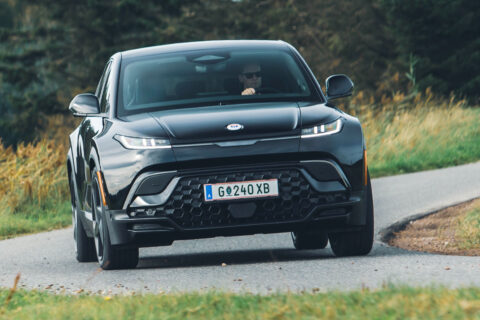
It’s comfortable and refined, though, and has greater suppleness, isolation and calm than a Tesla Model Y or a Ford Mustang Mach-E – because it’s not a car preoccupied with misplaced driver appeal. Steering is medium paced and weighted, and grip level stout and secure, although the car starts to nudge into progressive understeer and to depend on its electronic stability controls when hurried through corners. It drives in a way that’s more likely to appeal to Land Rover, Volvo and Mercedes regulars than BMW, Audi, Ford or Polestar exiles, I’d say. But there’s a refinement, maturity and pragmatism to the Ocean’s dynamic tuning that’s feels like it’s been engineered in at some trouble.
And the car’s value positioning doesn’t end there. If you’re happier with less range, less power and a cheaper car than our test example, the entry-level, single-motor, front-drive Ocean Sport (lithium-iron-phosphate battery, circa 70kWh) is set to offer 270 horsepower and a WLTP-certified 275 miles of range from just £35,970. Which is, let’s face it, Kia Niro EV or Peugeot e-2008 money for a significantly larger and more useful car.
Fisker’s first production model, the Ocean, has arrived!We got to experience it first-hand… pic.twitter.com/SsbLcyreDl
— Autocar (@autocar) August 1, 2023
That, it seems to me, is a bit of a breakthrough for the family EV market. How is Henrik Fisker able to come at that market with such standout value? Perhaps because his is a compact, lean company unencumbered by the fixed costs of manufacturing its own cars; and perhaps because the cars themselves are directly sold online, without the support of a widespead dealer network (so you’ll have to go to Westfield London to test drive one, and to collect it).
It remains to be seen what the ownership experience of a Fisker might be like, of course – whether the software bugs that so commonly afflict brand-new cars might also affect this one, and if so for how long, and how the company’s service back-up might deal with them. It’s a new company, so teething problems should be expected.
